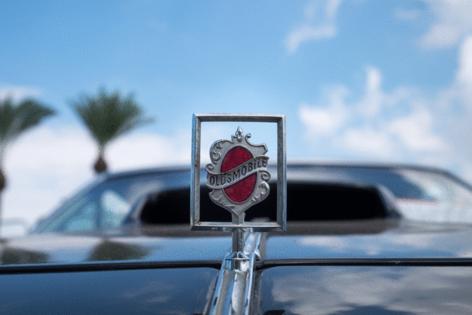Motormouth: Swivel seats?
Published in Business News
Q: Back in the ‘70s, Oldsmobile had a number of models with swivel bucket seats. Now that I am 80, where are these seats? It would be a lot easier for old folks to get in and out of their car.
M.B., Syracuse, New York
A: The simplest and cheapest solution is a swivel seat cushion. You can find many on Amazon for under $50. Full replacement seats are available, and some seats even have a lowering feature for disabled people. But that’s talking big bucks.
Q: In our recent paper you mentioned that hands on the steering wheel should be at the 3 and 9 o'clock position rather than the 2 and 10 positions because of the force of the airbag deployment on your arms. I was surprised that you didn't mention the single hand at the 12 o'clock steering wheel position that seems to be preferred by pickup drivers. That is just as bad!
J.N., Las Vegas
A: Yep, if not worse. Some people don’t even grasp the steering wheel, they just drape their wrist over the top. Yikes.
Q I loved reading how much you missed your old Chevy. It got me thinking about my 1970 Olds 442 that I sold in 1980. I have not driven a muscle car since the day of the sale, though I still think of that car as my favorite of my lifetime. If I stepped out of my Nissan Altima 3.5-liter right now and back into that 442, would I find the performance underwhelming? I also miss the whine of the old Muncie "Rock Crusher" 4-speed trans.
J.R., Burnsville, Minnesota
A: The 442 was selected as the pace car of the 1970 Indianapolis 500 and it was very good in a straight line, but handling? Not so much. The 442 wins on fuel guzzling horsepower. The Altima on fuel sipping economy. It’s like comparing apples to sudachi.
Q: As the owner of a very thirsty classic muscle car, I am getting conflicting advice from mechanics about whether I need to add a lead substitute to each tank of premium unleaded gas in my 1968 Pontiac. The car sports its original 400 CID motor. Is this additive necessary? What does it do?
J.M., Naperville, Illinois
A: Tetraethyl lead in gas left a lead buildup on the valve seats that cushioned the closing valves. Gasoline used to contain the stuff, but lead pollution triggered its demise. If you generally putt around town, you should have no issues. If you prefer to mash the gas, a substitute will help.
Q: I have a 2018 BMW X-5 Diesel with 95,000 miles on it. I really like the car, and it runs great with no problems. While getting the car serviced at the dealership, I spoke with a salesperson who said I should trade in the car before I have any problems with the timing chain. He then said it would cost me about $4,500 to replace. Is he being honest with me or is he giving me a sales pitch? I would like to keep the car for another 50,000 plus miles if possible.
J.F., Beverly, Massachusetts
A: Experts generally agree that the timing chain should be replaced every 80,000 to 120,000 miles or 10-15 years if you drive mostly short trips. Although more durable than timing belts, chains do wear and stretch a bit. That’s why they include a tensioner to keep them snug. The replacement cost is usually about $2,000-2,500, but dealerships are often more expensive. Replacement could give you more than 50,000 more miles.
©2024 Tribune Content Agency, LLC.












Comments